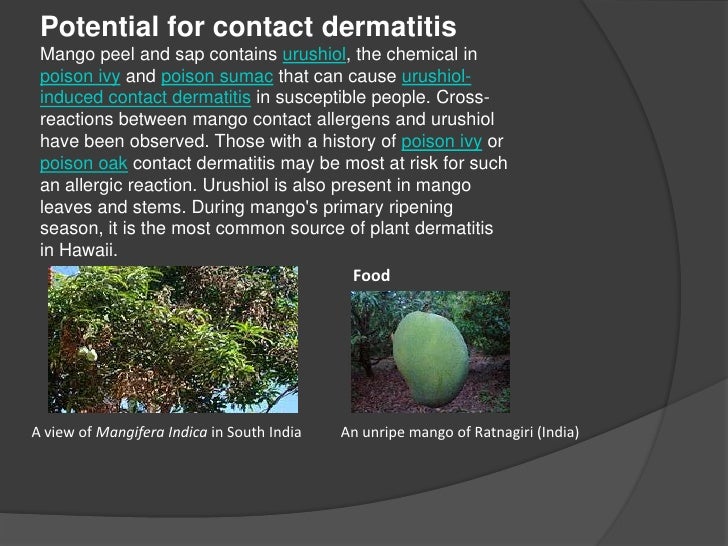

MANGO CROSS REACTIVITY SKIN
Mangos have a lot of urushiol in the peel and the fruit just beneath the peel.Ĭontact with urushiol will cause an allergic skin response, such as a rash, in most people. This reaction happens because of a substance in plants from the Anacardiaceae family called urushiol. Some people will have a skin reaction to mangos called contact dermatitis. Read Next: Symptoms of Contact Dermatitis Mango and Contact Dermatitis

However, cooked mango rarely causes a problem. Therefore, people with the allergy should avoid all raw forms of mango. However, there is a small risk of a more serious reaction like anaphylaxis. Any allergic response you may have will probably only affect your mouth and/or lips. The saliva in your mouth is usually able to break down the allergen fast. If you're diagnosed with OAS, know that it is not a serious condition. People who have had a severe allergic reaction to cashews or pistachios should avoid mangos because there is a potential for cross-reactivity.Īllergy testing usually doesn't hurt and may not take long. If you think you might have OAS, you'll need to have skin testing done to see if there is a cross-reaction between mangos and other allergens. Related: Foods That Can Cause Itching Is OAS Serious? In some people, these symptoms are also felt more broadly throughout the face and, in more severe cases, down the throat. The symptoms of OAS can include itchiness, tingling, and/or swelling of the mouth, lips, and/or tongue. OAS happens because there are similarities in the proteins found in mangos and pollens (usually birch pollen or mugwort pollen).Ī latex allergy can also cause OAS symptoms when eating a mango (also called latex-fruit syndrome). It usually gets better without treatment-often in just a few minutes. Oral allergy syndrome (OAS) is a minor allergic reaction that happens almost immediately after eating a piece of fresh fruit. Related: Why Do Some People Have Food Allergies? Mango and Oral Allergy Syndrome Other plants in this family are poison oak, poison sumac, and poison ivy. The mango grows on a tree that's part of the cashew family. Mangos are a mild-tasting fruit that can be used in sweet or savory dishes. Most varieties have yellow-orange flesh you can eat and a peel that's green or red. There are more than 1,000 varieties of mangos.
MANGO CROSS REACTIVITY HOW TO
You'll also learn how to find out if you're allergic to mangos and what to do if you're exposed. This article will go over why mangos and OAS are related. With more severe allergies, you may have more serious symptoms, like trouble breathing. Your immune system's overreaction to that substance (or allergen) makes you have symptoms like a skin rash. Mangos are a fruit that can cause an allergic reaction because of OAS.Ī food allergy happens when your body thinks that a substance is dangerous and tries to protect you from it. It's the mildest of three potential allergic reactions a person can have. Oral allergy syndrome (OAS) is a cross-reaction between pollens and fruits that the body recognizes as being the same. It's also possible for people to get allergy symptoms when they eat mango because they have another food allergy. However, some people can't enjoy the fruit because they're allergic to mangos. Mangos are a tasty, colorful piece of produce that is very popular.


 0 kommentar(er)
0 kommentar(er)
